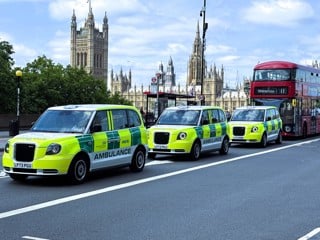Specialising in maritime container transport, Freightliner Ltd is the UK’s largest intermodal rail freight operator.
It is part of Freightliner Group which operates UK heavy haul, maintenance and international operations in Europe and Australia, providing a port-to-door, door-to-port service.
Despite being hit hard by the market collapse in 2008, Freightliner has bounced back and with investment in new vehicles and driver training initiatives, retained its 80% share of the market.
Richard Branston, general manager of road and port operations at Freightliner, has been with the company for 12 years and has seen a complete transformation in the haulage industry with efficiency and vehicle utilisation becoming a key focus.
“In order to make money in this business you have to be efficient, and in my opinion you can’t cut corners. We have laid the foundations for the future and now is payback time for organic growth,” says Branston.
3,000 boxes transported daily
Working predominantly for shipping companies, Freightliner transports more than 3,000 boxes by rail every day, and makes more than 138,000 final leg road deliveries annually through its in-house road fleet.
Freightliner operates 90 locomotives, which transport cargo from the deep sea ports of Southampton, Felixstowe, Tilbury, Thamesport and Seaforth to one of 14 terminals around the UK.
It is then placed on trucks for delivery to customer premises and depots. The train is loaded with goods due for export for its return journey.
Freightliner’s inland terminals enable the road fleet to keep mileage down: each vehicle annually covers around 50,000 miles, averaging 61 miles per job.
Routes are planned through an in-house scheduling system which uses years of trip analysis to work out the timings per journey.
Sub-contractors support main fleet
Freightliner leases its fleet of 151 trucks; it also uses 289 sub-contractors and will spot hire dependant on demand.
Around 28% of the road transport’s volume is dealt with by sub-contractors while Branston ensures the Freightliner fleet is 100% fully utilised.
When looking to acquire new trucks, the company will go out to tender and trial demos for months at a time to gain insight from the drivers and get real-life performance statistics.
The fleet’s 151 trucks are now Euro5 compliant after the company invested £11.9 million last year to replace the existing fleet. Trucks are serviced every eight weeks at the dealerships. Tyre pressures are checked weekly on site.
The fleet is predominantly made up of DAF and MAN trucks which until recently were run on a five- year replacement cycle.
Branston has now increased this to seven years because of improvements in reliability and quality to benefit from lower lease rates.
There are 157 drivers working at Freightliner. Hours vary in line with the constant change in demand.
“Our volume fluctuates quite heavily and as a result the working patterns can become quite varied. You never really know what you’re going to get until the day before,” says Branston.
All of the trucks are fitted with satellite tracking and a Canbus telematics system which enables Branston to gain a clearer insight into driver behaviour.
Efficiency and costs
Branston believes driver training is a key part to fleet efficiency and bringing costs down.
All drivers complete CPC training, plus licence checking through the DVLA every six months, a CRB check and a full medical (including drink and drugs testing) when joining the company.
The drivers are placed in a league table and reviewed every week with particular focus on harsh breaking, acceleration and idling – stats are taken from the telematics black box.
In-cab driver training is scheduled every six months but Branston will bring training sessions forward if drivers are under-performing.
The fleet’s average consumption is 7.5-8mpg, however after training this has increased to more than 10mpg, bringing substantial savings in fuel.
Efficient driver training has played a key part in Freightliner’s growth.
“We have seen some encouraging improvements to overall efficiency and we are working hard to continue to streamline our fleet, reduce CO2 emissions and promote driver safety,” Branston says.
“Training plays a key role in this and is definitely a worthwhile investment.”



















Login to comment
Comments
No comments have been made yet.